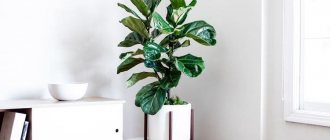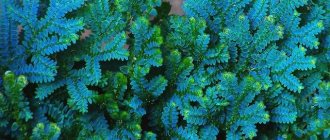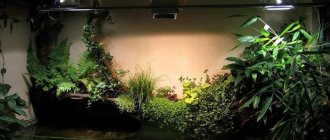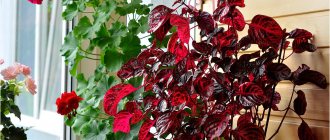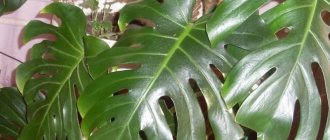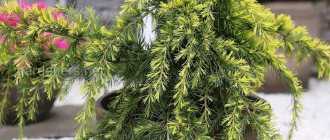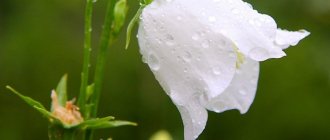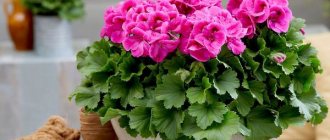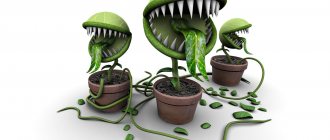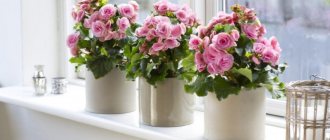The evergreen herbaceous epiphyte Billbergia is a member of the bromeliad family. It is very widespread in Brazil, but is also found in Argentina, Mexico, Bolivia and other countries in Central and South America. The genus was named by Thunberg in 1821 in honor of Gustav Billberg, a Swedish zoologist, lawyer and botanist. The genus includes more than 60 species, some of which are very popular among gardeners, since the plant is undemanding and unpretentious.
Botanical description of bromeliad
The roots of the flower are very well developed; they hold the plant very firmly in the ground. The stem is usually short, but representatives with long stems are rarely found. Bromeliad leaves are a funnel-shaped rosette. The inflorescences of the plant come in different colors and shapes. Most often they are yellow, coral or purple in color and have a racemose or paniculate shape.
Thanks to its bracted leaves, bromeliads look very elegant. Nowadays you can even find two-colored specimens of this flower.
Features of Bromeliad
Indoor bromeliad is a perennial herbaceous plant. The root system of the shrub is very well developed and reliably holds the plant in the ground. In most cases, the stem is shortened. Very beautiful leathery, variegated, often spiny pale green leaf blades form a funnel. The inflorescence growing at the end of a long flowering stem is bright red or dark yellow, dioecious, cephalic, spicate or paniculate. The inflorescence looks very impressive with large bracts. When the shrub finishes flowering, it produces capsules or juicy berries, which in some species form a complex inflorescence. Currently, there are about 35 species of bromeliads grown by gardeners.
History of the origin of bromeliad
A flower like bromeliad appeared about two hundred years ago. Throughout its existence, this plant had to constantly struggle with drought, as well as floods. However, he managed to adapt very well to life at the foot of the mountains, as well as on the rocks. Currently, this flower is considered exotic, for this reason having it in the garden or in the house is considered a sign of the coolness of the owners.
The birthplace of this flower is considered to be the state of Florida. There are currently about sixty varieties of bromeliads growing there. Moreover, the vast majority of them grow exclusively in this American state and nowhere else in the world. In addition, in Florida there are a huge number of communities of lovers of this flower, which are officially registered. And the income from breeding bromeliads for sale in the United States of America is about twenty million dollars a year.
Mulford Foster was the first to cultivate bromeliads in the United States of America. He was a very big fan of this flower. It was thanks to his efforts that bromeliads appeared in Florida botanical gardens, private greenhouses and even in living rooms.
Mulford Foster, together with his legal wife, constantly traveled around the world and from every country they visited, they brought some new variety of bromeliad. In total, they brought about two hundred varieties of bromeliads to the territory of the United States of America. Moreover, having built a luxurious mansion, they decided to call it...as you might guess, Bromeliad. In honor of your favorite flower. In a very short period of time, this mansion managed to become a real place of pilgrimage for amateur gardeners from absolutely all over the world.
In 1950, Mulford Foster and his legal wife founded the first officially registered community of bromeliad lovers in the United States of America. Almost immediately after this, such communities began to appear on the territory of countries such as Canada, South Africa, and Australia.
By the way, the well-known pineapple is not a fruit at all, as many believe, but one of the varieties of bromeliad. Although some varieties of bromeliads, if not the vast majority of them, have absolutely nothing in common with pineapple in appearance. The so-called Spanish moss also belongs to the Bromileaceae family. Which, contrary to its name, actually has absolutely nothing to do with Spain or real moss.
At the current time, this flower grows mainly in countries with subtropical and tropical climates. Particularly in a country like Brazil. Representatives of the Karo Indian tribe discovered that one of the varieties of bromilia can even be eaten without any harm to the body. We are talking about pineapple, as you probably already thought. However, it took years to learn how to grow it.
Types and varieties of bromeliads with photos and names
Bromeliad penguin
Of all the species of the genus Bromelia, only Bromelia penguin is grown by gardeners. This species is native to Ecuador, Costa Rica, Mexico and Venezuela. This plant contains the biologically active enzyme pengianin. In the wild, bromeliads form large inflorescences containing oblong fruits.
However, gardeners call bromeliads not only plants belonging to the genus of the same name, but also those species that belong to other genera of the bromeliad family.
Guzmania, or Guzmania
This stemless epiphyte is found wild in southern Florida, Ecuador, Brazil, the West Indies and Colombia. It is very popular among florists. The leathery, striped leaves form a cup-shaped rosette that collects rainwater or morning dew on wild shrubs. The inflorescence is on a leaf blade and consists of flowers that have no decorative value, but also has leaf blades with dark orange, purple, yellow or red bracts. Among the most popular gardeners are the following types and varieties:
- Gusmania lingualna. This large shrub has a dense rosette consisting of dark green leaf blades about half a meter long. There are brown stripes on the underside of the plates. The inflorescence is formed on a short stem and consists of small white flowers, but they are difficult to see due to the upper leaves, which are orange or red. There are varieties: Tempo and minor.
- Guzmania Nicaragua. This species has a small bush and grows well indoors. The vertical, spike-shaped inflorescence consists of lemon-yellow flowers, additionally decorated with scarlet bracts. The compact, fused rosette consists of 10-15 smooth, greenish, reed-shaped leaf blades about 50 mm long and up to 25 mm wide. They have small scales on the front surface, and the back side is crimson or brown.
Other species that can be grown in pots include mosaic, tricolor, blood red, Ostara, monochromatic, Donnella-Smith and conifera.
Vriesea
This tropical plant is native to South America. Bright, large inflorescences have the shape of a spike or panicle. Long, fleshy leaves form a dense rosette. Vriesia is represented by epiphytes and terrestrial forms. The following species are most often grown at home:
- Vriesia Sanders. The rosette grows up to 0.4 m in height and consists of smooth, leathery, green-gray leaf blades, often tinged with purple, which are most noticeable on the underside. The erect or submerged flower stem has an inflorescence at the top, which consists of spike-shaped rackets with yellow flowers and bracts.
- Vriesia glossy, or beautiful. Found in the wild in tropical rainforests. The rosette consists of broadly lanceolate leaf blades about 0.4 m long, variegated, with dark transverse stripes. The stripes are found in both purple and dark green. At the top of the vertical flower stem is a wide, lanceolate, spike-shaped inflorescence consisting of yellow petals and carmine-red bracts.
Other species to grow indoors include Vriesia cone, Vriesia regal, Vriesia creeping, Vriesia hieroglyphica and Vriesia giganta.
Aechmea
Found in Central and South America. The shrub has funnel-shaped, rosette-shaped leaves with jagged edges. Thick, long flower stems form showy inflorescences. The following types are popular among gardeners:
- Aechmea is dull red. The dense, funnel-shaped rosette consists of reed-like leaf blades that reach about half a meter in length and have scales with finely toothed edges. The outer surface of the leaves is greenish, and the lower surface is pale purple. The inflorescence consists of dark red bracts and bluish flowers.
- Sparkling echmea. The free rosette consists of belt-shaped leaf blades with a rounded top and jagged edges, their width is about 6 centimeters and their length is up to 40 centimeters. The leaves are greenish with a gray spot. At the top of the flower stem, an inflorescence is formed, consisting of dark pink bracts and coral-red flowers with a blue tip.
At home you can also find Echmea holostebel, Echmea caudate, Echmea striata, Echmea oblique, Echmea bentifolia, Echmea weilbach, etc.
Tillandsia
This genus of herbaceous plants has about 500 species. Under natural conditions, they can be found in North and South America. Most species are epiphytes, but some are lithophytes, growing on rocks. Some species are commonly grown at home:
- Tillandsia 'Medusa's Head'. This type is the most popular and has an unusual shape. The shrub looks like a bulbous plant with leaf blades that are closed at the base and bend sideways only at the apex. The rosette of leaves is usually inverted, the flowers are dark purple, about 3.2 cm long, the inflorescence is palmate or linear.
- Tillandsia blue. The leaf blades are curved and narrow, about 0.3 m long. The brown-red base of the leaves is covered with small scales. The dense inflorescence has an elliptical, spike-shaped shape and consists of small purple or blue flowers, with pink or lilac bracts.
Tillandsia Duera, Linden, Sitnik, Herringbone, Gardner, Violet, etc. also grown as houseplants.
Neoregelia
A herbaceous perennial native to Colombia, Ecuador, Peru and Brazil. The glossy, smooth leaves have a broadly linear, striped shape and spiny edges. In the center of the rosette the leaves are often light purple or whitish, although when the shrub flowers the tips turn red or completely red. A racemose inflorescence grows from the center of the rosette. The most popular types include:
- Neoregellia Carolina. The widely branched, funnel-shaped rosette reaches half a meter in diameter and consists of glossy, dark green, reed-shaped leaf blades with numerous spines along the edges. When the bush blooms, the upper leaf blades of the rosette turn red. At the base of the rosette a simple inflorescence is formed, consisting of milky green bracts and pale lilac flowers, reaching 40 mm in length. Some varieties have longitudinal stripes of green, pink or white on the surface of the leaves.
- Neoregellia tiger. A dense, round rosette consists of ligulate leaves with a pointed tip and brown spines along the edges. The leaves are very beautiful, with irregularly shaped brown stripes on the surface, with small scales covering the base of the blade. The multi-flowered, simple inflorescence consists of light purple flowers and pale red, pointed, asymmetrical bracts at the apex.
Other species are grown indoors: Neoregelia blue, vesicular carp, bract, bromeliad, Crassula (decorative), marbled, marbled, etc.
Features of care
Temperature and light
Bromeliads that grow at home on a windowsill require a lot of sunlight. However, the flower has a negative attitude towards direct and scorching sunlight. If it is not possible to provide the plant with diffused light, then during the midday heat it is recommended to shade the flower. Otherwise, bromeliad runs the risk of getting burned and subsequently getting sick.
The most suitable place in the apartment is the window sill on the east side of the house.
In winter, when daylight hours are short, it is recommended to provide bromeliads with additional lighting, which should also be diffused. In summer, the flower feels comfortable at a temperature of 23-25 C. In winter, the optimal temperature is considered to be 17 C. It must be remembered that keeping the plant for a long time at low temperatures (below 12 C) is fraught with the complete death of the flower.
Watering and air humidity
At home, bromeliads have to be watered frequently and abundantly, especially in the summer. Water should be poured very carefully, trying to get directly into the leaf funnel, as it is believed that it is the leaves that need moisture most. If you still cannot water in this way, then it is permissible to pour water directly into the soil.
The plant requires watering only if the top layer of soil is completely dry; stagnation of water can lead to flower disease. In winter, watering is recommended no more than once a week.
The homeland of this plant, as mentioned above, is the tropical forests of South America, so bromeliad always requires high air humidity. Below 60% is already a critical level and a signal that measures need to be taken . You can humidify the air around the plant using a spray bottle; therefore, this should be done quite often. In addition to this, you can place a container of water near the plant or keep a flower near the aquarium, which greatly complements the graceful flowering of bromeliads.
Watering is carried out exclusively with boiled and settled water without chlorine. The water should stand for at least two weeks. In order for the flower to feel comfortable enough, do not forget to wipe the leaves of the plant with a damp soft sponge, which should always be clean.
Top dressing
Like all indoor plants, bromeliads do not shy away from fertilizers. In the summer, fertilizing should be done twice a month, but no more. In winter, fertilizers are applied only once every month and a half. Mineral fertilizers for indoor flowers are excellent as fertilizers.
Bromeliad Mix
Bromeliad flower - home care
A name that is common to a given family. It belongs to:
- Neorgelia;
- Guzmania;
- Ekhmeya and others.
All varieties require the same care as Bromeliad Mix. How to care is described below. There is an interesting variety - the Bromeliad Slipper flower (Bromelia de sapato). It bears resemblance to women's stiletto heels.
Original variety of bromeliad
Bromeliad Flower Mix: home care
All you need to create a tropical home is the right temperature and humidity. Thanks to good care, it is possible to raise several generations of children who will decorate the house for a long time.
Watering, daily care and moisture regime
Watering is of particular importance for a flower. Determining the need for it is very simple: touch the top layer of the substrate: if it is dry, you need to water it.
Attention! Do not allow moisture to stagnate in the pan.
To humidify the air in the room where bromeliads grow, you can place a vessel with water. Bromeliads love to have their leaves rubbed. This procedure must be carried out in the summer. Once every 14 days, replace the water in the outlet with fresh water.
Diseases, pests and methods of combating them
Unfortunately, the Bromeliad family is plagued by pests. They are also susceptible to disease.
Signs that the plant is sick:
- the edges of the leaves are dry;
- spots on the leaf blade;
- leaves do not grow and become soft;
- the process begins to darken.
In the first case, moderate watering may help. This is effective when the vegetative part dries out. Darkening of the process signals that the room is not warm enough. When shoots don't grow, there is definitely too much water in the soil.
Pests
The most common pests:
- thrips;
- scale insect;
- spider mite.
In the fight against all listed insects, it is allowed to use insecticides. For example, Aktellik, Bicol, Akarin and others.
Fertilizers and fertilizing
Fertilize exclusively with minerals once every 21-28 days during the flowering period. In winter, fertilizing is applied less frequently and the concentration is reduced by 2 times than written in the instructions.
Flowering period
Bromeliad flowering
Bromeliads begin to bloom in late spring and early summer. Some gardeners resort to tricks to start the plant to flower early. To do this, they place apples next to the flower and cover them together with the flower with a plastic bag. They are kept in this tandem for about ten days. The secret here is that apples secrete a special component that promotes flowering of the plant.
Bromeliad flowers themselves are not particularly beautiful and do not cause much delight. It is much more pleasant to observe the bracts of bromeliads, which create all the wonderful effect during flowering. After flowering ends, and it can last up to several weeks, the faded rosette must be removed.
Characteristics of indoor bromeliad flower
The most attractive external part of the plant is the bright flowers, they come in a wide variety of colors: from soft pink to purple.
Thanks to the work of breeders, plants with white and scarlet flowers are also found in floriculture. Bromeliad leaves, which can reach up to 50 cm in length, are large and stiff, and some species may have small spines on their edges. The leaves form a rosette to collect moisture in their natural habitat. The same outlet is intended for watering plants at home. The root system of bromeliads cannot be called well developed, and therefore the flower receives most of its moisture through the rosette.
Bromeliad flowers can be collected in both simple and complex inflorescences and have a double perianth. The bracts are brightly colored. Bromeliad fruits are found in a capsule or berry, which can grow together into fruit. As a rule, the mother rosette dies off immediately after flowering, but the side shoots remain - with their help the plant can be propagated.
With regular watering and feeding, bromeliads can bloom in 2-3 years of life. The plant blooms only once during its life cycle, after which it dies.
Name
The unusual bright bromeliad flower has gained popularity among gardeners relatively recently. Growing an exotic plant at home is not difficult, but it requires compliance with some rules. More details about the intricacies of caring for bromeliads are described in this article. The name of the family was given in honor of the Swedish botanist O. Bromelius.
Bromeliad (Bromelia) is a genus that includes fifty species of herbaceous perennial plants. The genus was officially described by botanists in the mid-18th century. In indoor floriculture, only some compact and decorative species are successfully grown (Aechmea, Guzmania, Vriesia).
Bromelia
Bromeliad species
Gardeners gradually cultivated this unusual flower and created new species that are striking with purple, yellow, white or two-branched flowers. Cultivated types of bromeliads include:
- striped echmea, one of the most common, having bright spike-shaped inflorescences that last a long time when flowering;
- Guzmania has tubular rosettes and glossy leaves. The inflorescences delight in yellow, red, white and orange;
- Thallisia (Spanish moss) is an aerophytic flower from the bromeliad family;
- Vriesia is distinguished by a deciduous rosette, above which rise bright red flowers.
You need to know that bromeliad is quite capricious, and although it is from the tropics, it cannot be kept at temperatures above 25 degrees, moreover, it does not tolerate direct sun.
You can buy bromeliads at a reputable flower shop, and no matter what the sellers say, it blooms only once, after which, as a rule, it dies.
Transplanting a plant
Bromeliad transplant
Bromeliads can be replanted only if the conditions of the flower require it. It is not recommended to touch the plant again. If the roots of the flower begin to protrude from the pot, or they begin to grow through the drainage holes, then the bromeliad has become crowded and requires a new container. In any case, as a rule, transplantation is usually carried out no more than once every two to three years.
It is not recommended to transplant a flower during flowering or when it has just begun.
- To replant, you will need a wooden or ceramic pot, two to three centimeters larger than the previous one.
- Before the process itself, you first need to prepare the container; for this, a drainage layer, most often made of expanded clay, is placed on the bottom.
- Next, a prepared soil mixture containing sand and peat is placed on top of the drainage layer. These components have good moisture and breathability.
- After the new pot is ready, you need to free the bromeliad bush from the old soil and place it in a new container.
- After planting, the soil is well compacted and sprinkled with the prepared soil mixture on top.
Pineapple as an indoor potted plant
Solanaceae family - characteristics of nightshades
Homemade pineapple will surprise not only guests at home, but will also delight the owner’s eye all year round. Indoor pineapple is a decorative flower.
Homemade pineapple plantation
Caring for indoor pineapple
You can grow a pineapple at home in a pot if all the conditions are created and caring for it does not require much effort. This plant does not need pruning, only replanting in spring and summer. To plant a pineapple, you need to cut off a rosette, which is washed in a solution of potassium manganese. Next you need to sprinkle the cut with ash and let it dry. Then the rosette is transplanted into a pot (0.4-0.6 l), into which a drainage layer and a loose earthen mixture of leaf humus, turf soil, sand and peat are poured (ratio 1:2:1:1).
A description of how to grow pineapples at home is presented below.
Temperature, humidity and light
Indoor pineapple is a heat-loving plant, a unique specimen of the floristic kingdom. In summer it grows well at 25-28 °C, and in winter 22-24 °C.
Pineapple does not require high levels of air humidity and thrives in dry climates. Requires regular spraying with water at room temperature.
Important! This representative of Bromeliads is light-loving, but does not need direct sunlight.
Watering mode
Pineapple should be sprayed regularly and also watered with settled water at room temperature every day.
Important! In winter, the flower should dry out; it does not need to be sprayed or watered a lot.
Soil and fertilizers
The soil for the plant should consist of expanded clay, charcoal, broken bricks and soil.
You can add mullein infusion to the mixture (for 4-5 days) during the period of active plant growth.
Note! Alkaline fertilizers and wood ash should not be added.
Flower propagation
Bromeliad shoots
After flowering has finished, you can begin propagating the plant. Usually the signal for this is the appearance of shoots at the base of the bromeliad. After 2-3 months, after they have gained strength and energy, they will need to be carefully cut off with a sharp knife and the wound treated with crushed charcoal.
After separation, the shoots need to be dried in fresh air. If the shoots begin to develop their own roots, then you can safely prepare soil for them from sand and peat and plant each shoot in a separate container. In order for the seedlings to feel comfortable, the temperature in the room must be at least 20 C. However, they will begin to bloom no earlier than two years from the moment of planting.
Diseases
Rust on bromeliad leaves
Bromeliads rarely get sick, but you should still be wary of diseases such as powdery mildew or rust. If you still failed to protect the flower from these diseases, then you need to immediately prepare a fungicide solution and treat the soil with it.
As mentioned above, the flower really does not like direct sunlight; usually, in sunny and hot times of the day, the plant is saved from ultraviolet radiation by the presence of a curtain on the window.
If bromeliad foliage suddenly begins to turn yellow, then most likely there is stagnant water in the root system or the temperature in the room is very low. If the tips of the plant are brown, this indicates that the flower lacks moisture and the air humidity is very low. This can usually happen in winter when heating radiators are running.
Family Bromeliads
Plants in the Bromeliad family originate from the tropics, and several species have been found in the American subtropics and one in western Africa.
Bromeliads are epiphytes, meaning they grow on trees, rocks or other plants and obtain water and nutrients from the air and rainwater. Unlike most plants, they do not receive the necessary substances from the root system. Their roots are just a way to join the growing support.
Bromeliad
Almost all members of the Bromeliad family are characterized by the presence of a short stem and long urea-shaped leaves that are attached to each other and form a funnel. The structure of the leaves is simple: in some representatives of the species they are wide and dense, in others they are thin with a loose structure. Depending on the species, the inflorescence can be capitate, racemose or paniculate.
Types and characteristics of indoor plants from the Bromeliad family
There are about 3,000 different types of these flowers, among them: cryptanthus, guzmania, vriesia, indoor pineapple, aechmea, neoregelia, billbergia, acanthostachis, neoregelia, nidularium and many others.
Note! Those who have heard the name Bromeliad de Zapata and want to buy this flower need to know that it does not exist, it is an April Fool's joke.
Pests
If you take care of a flower indecently, it may be attacked by uninvited guests, in particular mealybugs or scale insects. Initially, you need to immediately remove the parasites from the flower, then you should prepare a soap solution and gently wipe all the bromeliad leaves with it. It would be a good idea to rinse the bush with clean water and cover the soil with plastic wrap.
If the pests still remain, you can try treating the bromeliad with tobacco tincture. Chemicals should only be used as a last resort.
Flower varieties
Among the most famous cultivated species are the following individuals:
Bromeliad pineapple . Among its fellows, this is the only species whose fruits can be eaten. It grows in the wild mainly in Brazil. Interestingly, when Christopher Columbus tried the fruit of this plant for the first time, he compared it to a large cone.
In Russia, this plant is grown only in heated greenhouses. The fruits of this species are mainly brought to Europe and Russia from the Philippines, Australia and Malaysia. Nowadays, flower growers even grow bromeliad pineapple at home, among them the most common are bromeliad macrotufts and pineapple bract.
Bromeliad penguin . This species came to us from Ecuador and Mexico. Bromeliad penguin in nature has large, oblong-shaped fruits.
Guzmania . This species grows naturally in Colombia, Ecuador and Brazil. Guzmania is very popular among flower growers. Its wide, leathery leaves have the shape of a belt, which grow together into a rosette, where all the necessary moisture accumulates in the wild.
The flowers of the plant are not of particular value, unlike the bracts, which are yellow, purple or red. The most common types of Guzmania are reed and Nicaraguan. In addition to them, in nature there are also mosaic guzmania, blood-red and single-spike guzmania.
Vriesia . This species is common in the tropics of South America. Vriesia inflorescences are paniculate or spike-shaped. Dense and juicy leaves, like other varieties of bromeliads, form a rosette. At home, the most popular species are Vriesea Sanders and Vriesea splendor. In addition to them, there are also royal, giant and keeled vriesia.
Ekhmeya . It grows mainly in tropical forests of South and Central America. The leaves have a serrated edge and are collected in funnel-shaped rosettes, which is particularly elegant. The most popular species among flower growers include matte red aechmea and sparkling aechmea. In addition to them, there are also other species, for example, bearded echmea, shaggy echmea and Weilbach's echmea.
Tillandsia . There are at least five hundred species in this genus. They can be found in the wild in South and North America. Among them there are plants growing on rocks, called lithophytes. In addition to them there are epiphytes and terrestrial subspecies. Flower growers most often grow Tillandsia “Jellyfish Head” or Blue Tillandsia.
Neoregelia . This perennial species is native to Brazil, Peru, Colombia and Ecuador. The large, smooth leaves have small spines along the edges and are belt-shaped. The leaves have a pale lilac color. During flowering, the tips of the leaves become red. The most popular subspecies are Neoregelia Carolina and Neoregelia tiger. In addition to them, flower growers also cultivate blue, vesicular and marbled neoregelia.
Bromeliad moora
Cyperus - home care and reproduction
Bromeliad Moora has long, lanceolate leaves up to 25 cm. The width does not exceed 5 cm. There are thorns along the edges. The flower has a dark green surface in the center, turning into scarlet. The transition is almost imperceptible. The inflorescence is spike-shaped and yellow in color.
How to water bromeliads, air humidity
Watering conditions do not differ from moisturizing other representatives of this exotic family.
Optimal temperature for growing bromeliads
The optimal temperature for Moora bromeliad just starting to bloom is +24…+25 °C. It is allowed to lower the temperature by 5 °C when the buds fully open.
Location and lighting
The room should be well lit, without direct rays. It is better to place the flowerpot in the west or east. This will make this plant more comfortable.
Bromeliads in nature create cozy corners
Plant substrate
A young plant requires a nutrient substrate consisting of several types of humus. After a few years, the soil is replaced.
Bromeliad is the general name for a huge family of flowers native to the American South. Some varieties are ideal for home decoration. The plant requires moderate watering, high humidity, indirect light and warmth. The principles of cultivation are the same for all varieties.
Coffee capsule Nescafe Dolce Gusto Cappuccino, 3 packs of 16 capsules
1305 ₽ More details
Coffee capsules Nescafe Dolce Gusto Cappuccino, 8 servings (16 capsules)
435 ₽ More details
Monitors 2560×1440
Choosing a plant in a store
Before purchasing the desired plant in the store, you need to know a few simple rules. A healthy bromeliad has leaf blades that are lush green and fleshy. As a rule, they form a rosette. Sometimes a marble pattern can be observed on the leaves of some species. This plant has no stem at all. The peduncle must be bright and most often it rises above the rest of the plant.
Thus, we can conclude that a healthy flower will not have various suspicious spots and plaque on the leaf blades. If they are flabby and soft, this means that the flower has been affected by some kind of disease and you should not buy it. You should not give in to the persuasion of sellers; it is better to play it safe and look for another flower.
Subtleties of caring for bromeliads
The importance of creating a humid microclimate has already been mentioned. Let's talk about lighting, watering, fertilizing.
The soil
Bromeliads grow well in loose and light substrate with an acidic reaction. For your pet, you can buy ready-made soil for orchids in the store or prepare suitable soil with your own hands. For bromeliads there is a proven mixture recipe:
- leaf turf soil 2 parts;
- river sand 0.5 parts;
- peat 1 part;
- humus 1 part.
It is useful to add to this mixture: sphagnum moss, crushed pine bark, pieces of charcoal, perlite. Additives should be no more than 20% of the soil volume.
The drainage layer (expanded clay, perlite, bark) in the pot where the bromeliad is planted should occupy about a third of the volume of the dish. The plant is very sensitive to stagnant moisture at the roots.
Lighting
Bromeliads need good lighting. However, do not forget that sunlight on the leaves leads to burns on them.
In winter, gardeners create additional lighting for it using installed lamps. It is desirable that the light comes from above.
The plant will delight you with bright, long-lasting flowering if:
- choose the right substrate;
- apply fertilizers in a timely manner;
- provide humidity and lighting that meet all requirements.
Temperature
For bromeliads, conditions are considered comfortable at a temperature of 21-25°C. In winter, she likes to reduce these indicators to 15-17°C. The most important thing is to ensure that the room temperature does not drop to 10-12°C. Then the plant may die.
Watering requirements
This flower requires frequent watering. On hot days this is done daily. Water it into a leaf-shaped funnel.
It is important to know! Periodically (monthly) the water from the funnel should be drained and replaced with fresh water.
This method is based on the fact that in the jungle flowers accumulate moisture in the rosette during rains. Therefore, flower growers are trying to create conditions close to natural.
Another part of practitioners disputes the benefits of such watering. They believe that in this case, rotting and death of the plant occurs more often. The microclimate of an enclosed space differs significantly from that of a forest in terms of air circulation, humidity, and illumination. These gardeners insist on the usual method of watering.
It is important to ensure proper watering. The soil on top should dry out a little, but not dry out. Over-wetting the soil should also be avoided. Practitioners use this method - they place a pot with exotic on a pallet, in which they lay pebbles and expanded clay, and moisten them. The tray fillers retain moisture longer and protect it from evaporation. Soil acidification does not occur.
Watering requirements
In winter, the procedure is carried out only in the usual way - water is poured directly into the pot to prevent moisture from stagnating in the funnel and rotting. Water 1-2 times a week.
Do not use hard or cold water. The ideal option is rain or snow water. But this is not always possible. Then they do this - pour tap water into the dish, let it settle, and only after that use it for watering or fertilizing.
On a note. Brown tips on bromeliad leaves indicate watering with hard water.
Bromeliads like spraying around them with a spray bottle in hot weather.
Air humidity
Bromeliad loves high indoor humidity, not lower than 70%. The plant is sprayed daily in the morning and evening. Place a container of water or a humidifier next to the pot. The flowerpot can be placed on a tray with pebbles or expanded clay.
The plant receives oxygen through the leaves, so once a week they are wiped from dust with a damp cloth or sponge.
How to fertilize correctly
The flower needs additional feeding during the period of active growth. This usually happens in March-August.
It is recommended to use ready-made mineral fertilizers for flowering plants.
Feeding is carried out once every 2-3 weeks, in winter less often - once every 1.5-2 months. Most often, fertilizers are added to water for irrigation. The following methods are used:
- basal - watering directly into the soil;
- foliar - by spraying.
On a note. The concentration of solutions should be prepared much weaker than indicated in the manufacturer's instructions. It is advisable to reduce it by 3-4 times.
Bromeliad flowering
The plant usually blooms in the warm period - in summer. Let us share with you a small life hack - how to speed up the flowering of bromeliads.
- Place a container of apples next to the flower.
- You can even take several fruits and put them in a plastic bag along with the pot for a week or 10 days.
- Apples emit a gas called ethylene - it significantly accelerates the formation of inflorescences on the plant.
Care measures for bromeliads during flowering remain the same. Control air and soil humidity and room lighting. The flowering period depends on the variety - it can last from a couple of weeks to several months.
When the plant has flowered, you should not get rid of the peduncle right away. Only when it becomes completely dry can it be trimmed.
An interesting difference between a flower is its ability to bloom once during its entire life cycle. After flowering, the adult plant dies, but leaves behind children - kiki, from which a new flower grows.
Bromeliad flower: stimulating flowering
The main guarantee of beautiful bromeliad flowering is ethylene. After all, flower growers most often plant a bromeliad flower precisely for its amazingly beautiful flowering. In their natural habitat, bromeliads independently emit ethylene, which, in fact, helps them bloom beautifully. And at home there are 2 proven ways to make bromeliads bloom.
- 1 way. Tie 3 apples or a bunch of bananas in a bag with bromeliads and leave for a couple of days. In this case, the temperature must be above 26 degrees Celsius. By the way, you can use tomatoes instead of apples and bananas.
- Method 2. Get some calcium carbide somewhere - it's what gas welders use. Take a half liter jar, fill it with water and add 1 tsp. substances. Let it brew for 24 hours, and then carefully drain the infusion so that the sediment remains separately in the jar. For 7 days, once a day, the infusion is poured into a leaf rosette. And you need very little - only 50 g of infusion. After 1.5 months after such manipulations, the bromeliad is guaranteed to bloom.
Dangers and pests
As with many other plants, proper care is key to a healthy bromeliad.
- Brownish leaf edges indicate low indoor humidity or insufficient watering.
- If the leaves turn pale, it means the plant does not get enough sunlight.
- It loses leaves from a draft, and from an excess of fertilizer the root system is “burnt.”
- Stunted growth, yellowing and unexpected flowering indicate a lack of fertilizer and nutrients.
- High humidity can cause fungus on the leaves.
- Parasites that are dangerous for bromeliads include thrips, spider mites, mealyworms and scale insects. They are collected by hand and the plant is wiped with soapy water.
- The scale insect is afraid of alcohol; it can be added to the water. There are also ready-made insecticides for controlling insects.
Diseases and pests dangerous to bromeliads
Diseases do not often affect this flower. Sometimes powdery mildew occurs. It appears on leaves or growing shoots in the form of brown balls, which later turn into a thick, dark coating. Possible rust damage.
Bromeliad diseases
Fungicides are used for treatment: topaz, foundationazole.
Of the harmful insects, scale insects and mealybugs most often settle on bromeliads.
Scale insects are recognized by the presence of pale or brown scales attached to the leaves. Get rid of them in the following way:
- The mechanical way is first - remove scale insects from the leaves with a sponge or brush.
- This is followed by treatment with a weak alcohol solution with soap in cases of mild damage.
Scale insects on leaves
In case of severe damage or for the purpose of further prevention, spray with chemicals: actellik, phosbecid, actara, fitoverm. Mealybugs are also dealt with in a similar way.
Helpful advice. When processing the bush, the surface of the substrate in the pot is covered with film. It is important to ensure that no chemicals get into the funnel.
Shiny marks and white spots on the inside of the leaves suggest that they are infested with thrips. They appear in a room with dry and warm air. Methods to combat them are spraying with actellik, fitoverm.
Another possible pest is the spider mite. It is recognized by small white dots or thin webs on the leaf blades. A common cause is also dry air in the room. They get rid of it by treating with Bicol, Acarin, Neoron. The procedure is carried out 3 times with a 4-day interval.
Prevention methods that must be followed to avoid pests:
- maintaining high humidity in the room;
- Newly acquired plants should first be isolated from their own plants;
- Conduct regular inspections of bushes.
